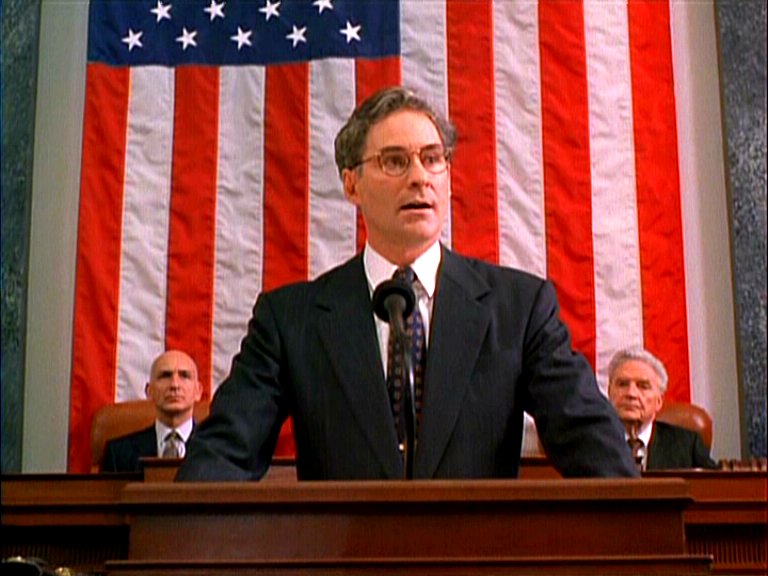In case it seems like I’ve disappeared off the face of the
Earth, I want to reassure you that, for the most part, I have. Granted, it’s been an amazing first couple
months, and I’ve found the whole process immensely satisfying. The work I’m doing, the events that I’m
attending, the people that I’m meeting; the whole process has been a whirlwind
of excitement. And very little sleep
But, once in a while, my lovely wife, Xu, comes to town to help
pull my head out of this world I’ve jumped into, and actually enjoy what’s
around me. Which is why, during a visit
a couple weeks ago, I got a seriously American Autumn Weekend.
Day 1: The White House Fall Garden Tour
I am truly fortunate to live with an awesome bunch of
folks. None of them are in the same
program as me, which is a good thing, as they give me considerable perspective
on what’s going on in DC beyond my own personal experiences. One of them, J, is a political appointee who
has given me a fascinating view into the world of the executive branch for those
who move in and out of the system at the whim of the President. On top of that, J is a great guy to know, and
I’m glad to be sharing some space with him.
This explains how, late on a Friday night, the day before I’m
to go pick up Xu from the airport, I arrive home to discover two tickets to the
White House Fall Garden Tour sitting on my desk.
 |
| Look what the politics faerie left! |
The White House Fall Garden Tour is an annual tradition
whereby the White House admits thousands of folks with these tickets, gotten through
all manner of various connections – and there are lots of connections in this
town – onto the White House grounds for a tour of the gardens. And there are a lot of gardens, lawns,
objects, and stuff to see on the White House grounds, including the White
House, itself, which one gets to peer at from a very close distance. Which is pretty cool.
After waiting in line with what had to be at least several
thousand people, we were admitted onto the grounds. The process moved quickly, though, since
people had been pre-warned not to bring bags, so there wasn’t a lot to the
security process beyond the standard metal detector. And once inside, manicured lawns as far as
the eye could see.
 |
| It's not the same without the ridiculous stream of thousands of people standing behind me. |
A bit of walking through English Garden style greens brings
you within view of the White House, which looks less like itself and more like
a stately manor as you come upon it.
 |
| Eh, yep, that's the White House. Right... there. |
My colleagues in the birder world will be pleased
to note that one of the first things you encounter on entry is a display about
the birds that frequent the White House grounds, especially during the winter. There were numerous displays like this, and I
was impressed with the effort gone into educating visitors on the natural components
that go into a lovely landscape like this.
 |
| I know nothing about birds, so there will be no further commentary on this point. |
And then, the White House really springs into view.
 |
| White House! |
 |
| Xu! And the White House! (And other people, like, whoa, where'd she get the stripey shirt?) |
This is the South view of the White House; the North face of the White House is gated, and is the one in which you often see protesters assembled. The tour took place on the South lawn,
famous for events such as the Easter Egg roll and features such as the Marine
One landing point.
 |
| There's that fountain you always see in the movies about the President. And there's a big line of people that we have yet to get to. |
The architecture is really spectacular, and a bit difficult
to take in at close range. I’m used to
seeing these structures from a distance, so when you try to take a picture, you
instead discover the little bits, the ionic columns, lamps, and balconies, for
example.
 |
| Two guards stand at the door in the lower-right, and they seemed to be getting a kick out of all the pictures being taken of them, although it was tough to tell. |
There are things that aren’t what you’d expect. This is the Rose Garden:
 |
| The Rose Garden. I think. |
I would have expected more roses. In actuality, there’s a wide variety of
horticulture going on here. And the
residence, where the First Family lives, is behind the doors leading off to the
left of this photo. And if you follow
that, you arrive at… well, what are the guesses as to what this is?
 |
| The President's Home Office; I wonder if he claims that as a deduction on his income taxes. |
If you said that’s the exterior of the oval office, you win
something, I don’t know, give yourself a prize.
You can see the curvature a bit, but it’s sort-of tucked back
there. And, by the way, the putting
green is apparently around the corner, there, but I couldn’t get a view of
it.
Oh, but hey, some folks know how to have fun! That’s Malia and Sasha’s play area. Actually, a pretty nice play area, I wouldn’t mind going in. The fact that I did not is due to a certain level of politeness on my part and a Secret Service agent on their part, standing out of shot but very much in view.
Note also the framed photos in the bottom left. Those are situated all over the grounds, and
show various presidents over the last 80 years or so engaging in various
activities on the White House grounds, including JFK with his horse, George HW
Bush walking around the grounds, and
Hillary Clinton planting a dogwood. They
really add a lot to the experience, because they show that people really do
live here, and gives a flavor of the sorts of things they do while they’re
here. Perhaps it’s a bit of celebrity
peeping, but in this case, it’s our house, so it’s nice to know it’s being used
well.
The gardens aren’t limited to bushes and flowers, there are
numerous lovely arrangements of trees.
 |
| Actually, I'm not really sure why I took this picture. Still trying to figure it out. Maybe it's something about the top of that woman's head. It's a mystery. |
Which give way to more splendid views!
 |
| This is what I look like in full sunlight and sunglasses. If you look carefully, you can see the White House in the distance. Over my shoulder. No, the other shoulder. |
This picture came out so beautifully – the green grass, the
blue sky, and the White House framed so well – that I’ve come to the conclusion
that I needn’t have been there. Seriously, you could have Photoshopped me into
that picture, and that’s about what it would look like. Credits to Xu who took it, and here she is
with me:
 |
| That's nice! |
 |
| Bunch of really stupid-sounding college students were discussing throwing someone in the fountain for his birthday. Sad part is, about 15 years ago, I was having almost that exact same conversation. |
By the way, this day wasn’t just special because of the Fall
Garden Tour. October 15 was also a major
Occupy Movement protest day, as well as a day of protest in advance of the MLK
Memorial dedication the next day. So, the
streets were filled with protestors of various stripes, some of whom we could
see from the garden. (And we could
clearly hear the voice of Al Sharpton rising over the otherwise quiet of the
calm afternoon.)
 |
| I direct your attention to the line of people in the background, as opposed to the line of people in the foreground. |
Did you know that the White House has a beehive?
 |
| It's sort-of hidden, as in, please, don't tell anyone the White House has a beehive! |
And one of the more popular attractions was the White House
Kitchen Garden:
 |
| As you can see, this is the White House Kitchen Garden. |
 |
| I don't know what any of these are, but presumably they're edible. If the guards aren't watching, that is. (Protip: They're ALWAYS watching.) |
 |
| Sorry, I forgot to mention, Keanu Reeves was on our tour. |
According to our program, over 1000 tons of food have been
generated from the garden since it opened nine months ago. Regardless of how you feel about the White House
having a garden (and I’m not sure why you’d have a problem with it; after all,
they used to graze sheep there), that’s a pretty impressive yield.
So, it was a beautiful day at the White House, but I picked
up one new bit of information as I was leaving.
I’d heard of the Executive Office Building, but I figured it was some grey
office building stashed a block away or so, next to some of the other post-modern
structures.
Not quite:
 |
| Austria? Nein! It's the EEOB! |
The Eisenhower Executive Office Building is both right next to the White House and a
stunning building. Actually,it’s a bit
strange. Am I right in saying that this
is Edwardian in design? At the least, it
reminds me much more of the sort of buildings being built in the late
nineteenth and early twentieth centuries in Europe, rather than anything you’d
expect to see in DC, where we’re much more about the Colonial and Neo-classical
designs. (Again, correct me if I’m wrong there, these are vague echoes from
history class…) A stunning building, but
a strange sight to see.
 |
| Stunning and strange. |
We did take a loop around the North Face, by the way, but it’s
tough to grab a good picture, and that one, to be honest, you might as well get
from a postcard or an episode of West Wing or The American President. Still, here it is.
 |
| As seen on TV. |
So that was the first part of our big American Autumn
tour. Special thanks to the housemate for hooking me up. A beautiful day for a fabulous
tour with my wonderful wife. (Awww…) For an afternoon, not a thought in the world
toward projects, schedules, or Happy Hours.
Not bad.
Now that you’ve seen the current President’s place, next
time a few pics from the first President’s.
 |
| And that's how I spent my summer vacation, the end. |












